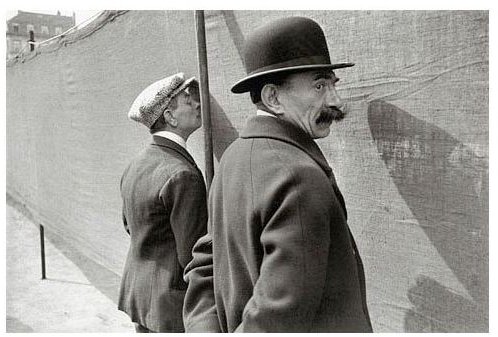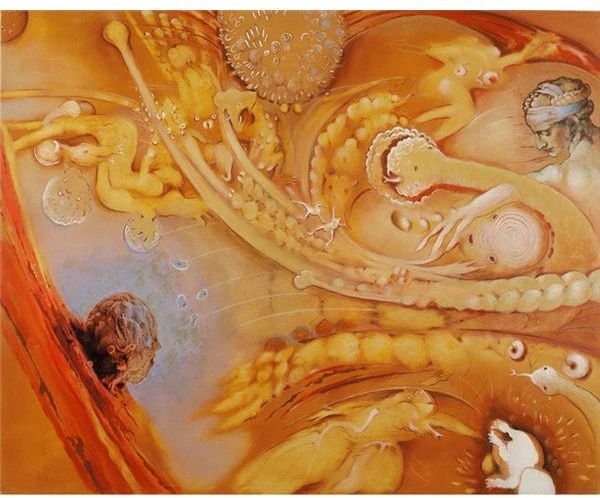Story of Henri Cartier-Bresson - Who Was This Famous Photographer?
Henri Cartier-Bresson
Henri Cartier-Bresson was born in Chanteloup-en-Brie, France on August 22, 1908. While his true passion in life was as a painter, Henri Cartier-Bresson is famous for his photography. He has been called the “father of modern photojournalism”, and was best known for candid photos.
His interest in art began very early in his life. When he was young, he explored the use of a 3x4 view camera for family pictures and photos around the neighborhood. Throughout the1920s, he studied painting at a private school in Paris, and later was able to use his knowledge and training to better his photography.
After serving one year of service in the French military, Henri caught interest in photography. He began to see the connection between painting and photography, and became inspired to take his camera “out into the street”, as he stated. His ultimate goal was to capture life and candid emotion by remaining anonymous to his subjects. To attain this goal, he even went as far as to paint all of the bright or metallic parts of his camera black, so they would be more inconspicuous.
Becoming a Photojournalist
Early in 1934, Henri Cartier-Bresson met photographers David Seymour and Robert Capa. The three became friends and shared a studio throughout the early 1930’s, and Capa mentored Cartier-Bresson. Later, the three would help create Magnum Photos.
Cartier-Bresson’s first published work was actually of fashion, which was not his best work because he claimed he no idea how to interact with the models or work within the atmosphere. It was not until 1937 that Cartier-Bresson would have photojournalism images published. These were images of his coverage of the coronation of King George VI, in which he took no photos of King George. Instead, he took photos of the crowd.
World War II

Henri Cartier-Bresson married the Indonesian dancer, Ratna Mohini in 1937. They lived together in a large studio with only a small bedroom, kitchen and a bathroom where he developed film. For the next two years Cartier-Bresson worked as a photojournalist for the French Communists’ evening paper. Then, as World War II broke out, he joined the French Army as a Corporal in the Film and Photo unit.
During battle in June 1940 at St. Dié, Cartier-Bresson was captured by German soldiers. He spent three years in a prisoner-of-war camp doing forced labor under the German Reich, and tried three times to escape. He succeeded on his third attempt and hid on a farm before making his way back to France. Once he was there, he began underground work, helping more escape and continuing work with photographers to document the Occupation and then the Liberation of France.
After World War II ended, Cartier-Bresson was asked by an American organization to make a documentary of his coverage during the war. The documentary focused on returning refugees and debuted in 1947.
Magnum Photos
1947 also saw the creation of Magnum Photos. Cartier-Bresson, with his old mentor Robert Capa, David Seymour, and George Rodger founded the agency as a co-operative photo agency owned by its members. The founding team set their assignments world areas among the members. Cartier-Bresson was assigned to India and China.
Cartier-Bresson again received international recognition as he covered the funeral of Gandhi in India 1948. He also photographed the last surviving Imperial eunuchs in Beijing, when the city began falling to the communists. He then went to India to cover their independence from the Dutch.
Retirement and Legacy

Finally in 1968, Cartier-Bresson began to turn away from photography and back to his passion of painting. He withdrew as a member of Magnum. In 1967, he had divorced from his first wife, and married photographer Martine Franck, in 1970.
Cartier-Bresson then officially retired from photography in the early 1970s and by 1975 no longer took any pictures which were not private portraits. He even said his camera was kept in a safe and rarely taken out.
Cartier-Bresson died at the age 95 in France August 3, 2004. No cause of death was ever announced. His legacy continues today for candid life photography, and he remains a source of inspiration for photojournalists.
Sources
Sources used, and for more information:
https://www.newworldencyclopedia.org/entry/Henri_Cartier-Bresson
https://en.wikipedia.org/wiki/Henri_Cartier-Bresson
https://www.artknowledgenews.com/Henri_Cartier_Bressons_Centennial.html
